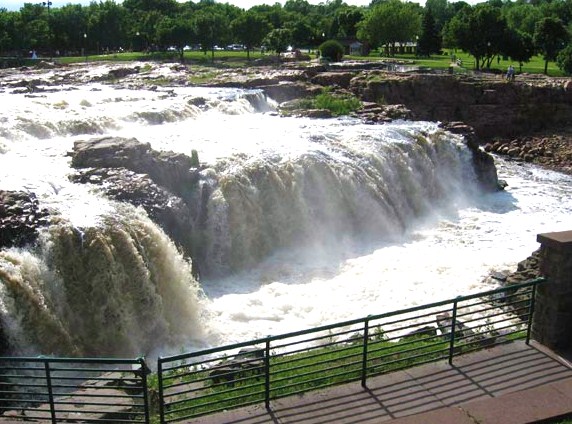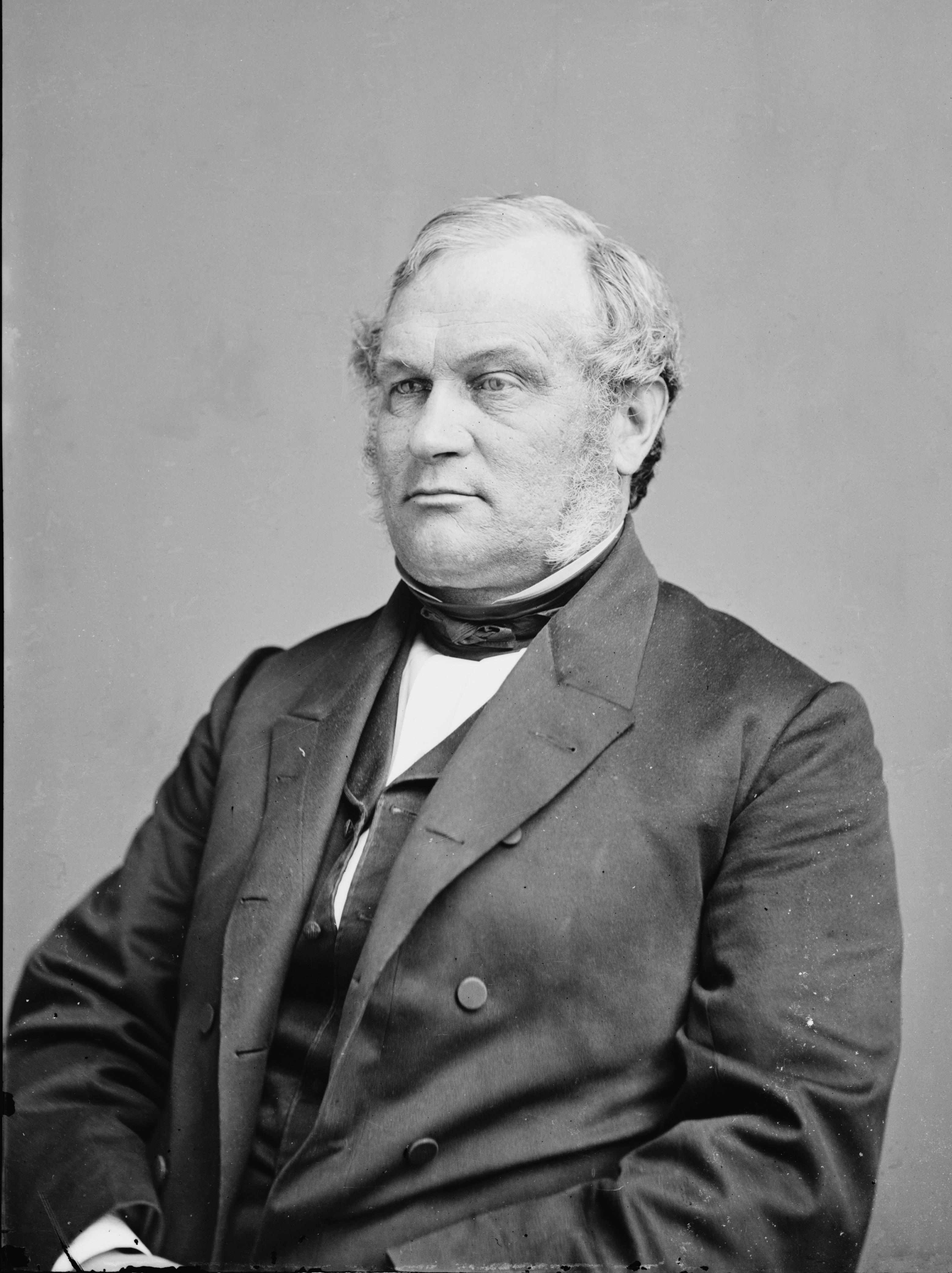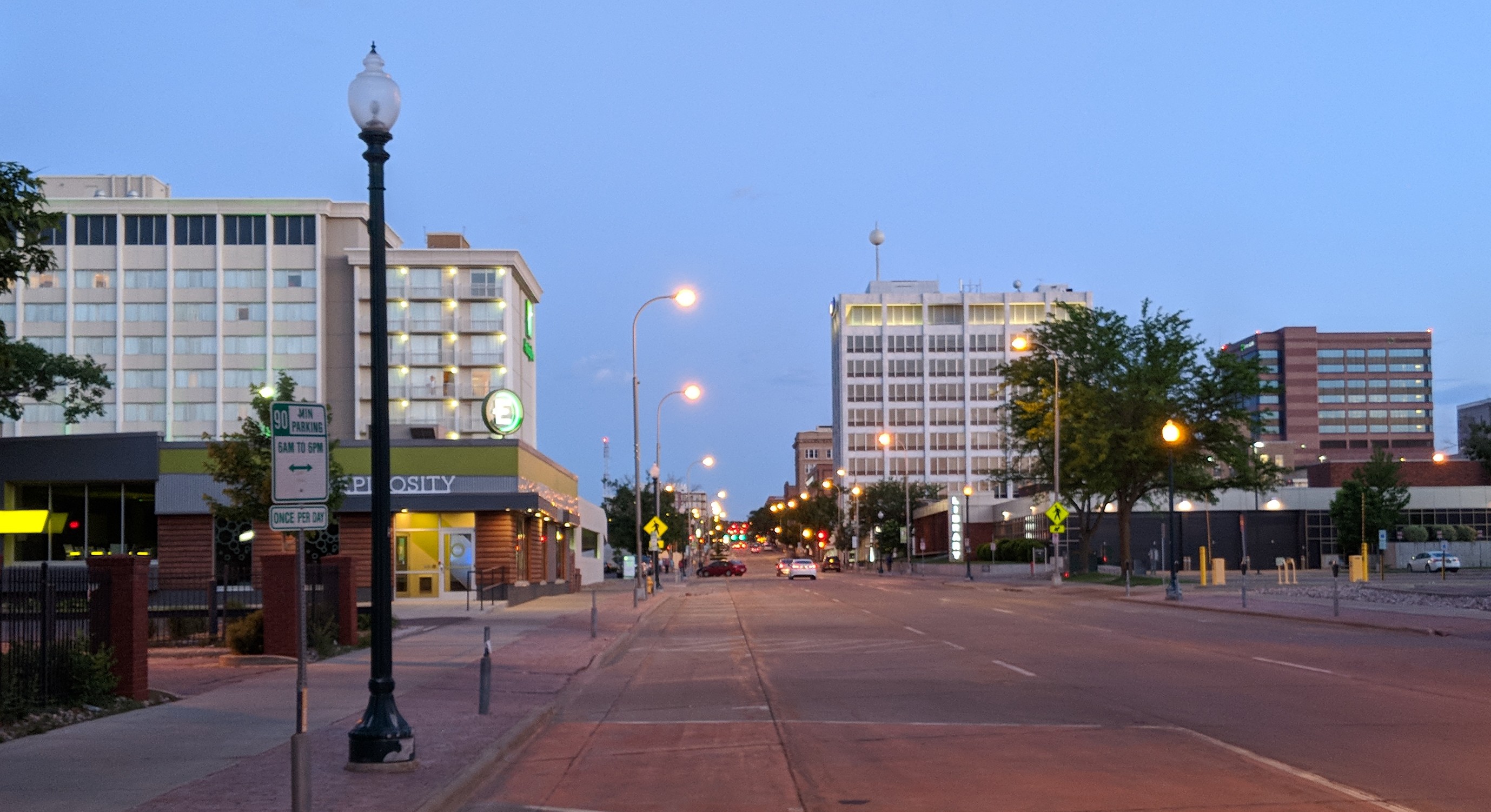|
Wilmot Brookings
Wilmot Wood Brookings (October 23, 1830 – June 13, 1905) was an American pioneer, frontier judge, and early South Dakotan politician. He was provisional governor of the Dakota Territory, and both the cities of Wilmot and Brookings as well as the county of Brookings, South Dakota are named for him. Early life Brookings was born on October 23, 1830, in Woolwich, Maine to Abner and Susannah Bayley Brookings. (The 1860 Dakota Territory census lists his birthplace, possibly incorrectly, as North Carolina). Brookings attended Bowdoin College in Brunswick, Maine, graduating in 1855. He married Clara Carney of Dresden, Maine and went on to teach at Litchfield, North Anson, and Wiscasset before being admitted to the bar in May 1857. Dakota Territory Brookings moved to Sioux Falls, Minnesota Territory on August 27, 1857, where he helped pioneers organize a county government (Minnehaha County). The county appointed him district attorney. In February 1858, Brookings rode a horse from ... [...More Info...] [...Related Items...] OR: [Wikipedia] [Google] [Baidu] |
Dresden, Maine
Dresden is a town in Lincoln County, Maine, United States, that was incorporated in 1794. The population was 1,725 at the 2020 census. History The town was originally settled in 1752 under the name Frankfort by French and German Huguenots, who were part of the first wave of French-speaking immigrants to arrive in Maine, but were distinguished from later arrivals by their Protestant faith. William Shirley built Fort Shirley in the community at the same time Fort Halifax (Maine) was built. First called Frankfort, so that the new French immigrants could pretend to be German, the town was incorporated as Pownalborough in 1760, when Lincoln County was created in the Maine District of Massachusetts. Pownalborough included the Town of Wiscasset, which was soon set off on its own as the shire town of the county. When the present territory was incorporated in 1794, Lincoln County Probate Judge Jonathan Bowman chose Dresden as the new name of the town because he liked the sound of it. Dr ... [...More Info...] [...Related Items...] OR: [Wikipedia] [Google] [Baidu] |
Provisional Government
A provisional government, also called an interim government, an emergency government, or a transitional government, is an emergency governmental authority set up to manage a political transition generally in the cases of a newly formed state or following the collapse of the previous governing administration. Provisional governments are generally appointed, and frequently arise, either during or after civil or foreign wars. Provisional governments maintain power until a new government can be appointed by a regular political process, which is generally an election. They may be involved with defining the legal structure of subsequent regimes, guidelines related to human rights and political freedoms, the structure of the economy, government institutions, and international alignment. Provisional governments differ from caretaker governments, which are responsible for governing within an established parliamentary system and serve as placeholders following a motion of no confidence, ... [...More Info...] [...Related Items...] OR: [Wikipedia] [Google] [Baidu] |
Minnesota
Minnesota () is a state in the upper midwestern region of the United States. It is the 12th largest U.S. state in area and the 22nd most populous, with over 5.75 million residents. Minnesota is home to western prairies, now given over to intensive agriculture; deciduous forests in the southeast, now partially cleared, farmed, and settled; and the less populated North Woods, used for mining, forestry, and recreation. Roughly a third of the state is covered in forests, and it is known as the "Land of 10,000 Lakes" for having over 14,000 bodies of fresh water of at least ten acres. More than 60% of Minnesotans live in the Minneapolis–Saint Paul metropolitan area, known as the "Twin Cities", the state's main political, economic, and cultural hub. With a population of about 3.7 million, the Twin Cities is the 16th largest metropolitan area in the U.S. Other minor metropolitan and micropolitan statistical areas in the state include Duluth, Mankato, Moorhead, Rochester, and ... [...More Info...] [...Related Items...] OR: [Wikipedia] [Google] [Baidu] |
Artificial Limb
In medicine, a prosthesis (plural: prostheses; from grc, πρόσθεσις, prósthesis, addition, application, attachment), or a prosthetic implant, is an artificial device that replaces a missing body part, which may be lost through trauma, disease, or a condition present at birth (congenital disorder). Prostheses are intended to restore the normal functions of the missing body part. Amputee rehabilitation is primarily coordinated by a physiatrist as part of an inter-disciplinary team consisting of physiatrists, prosthetists, nurses, physical therapists, and occupational therapists. Prostheses can be created by hand or with computer-aided design (CAD), a software interface that helps creators design and analyze the creation with computer-generated 2-D and 3-D graphics as well as analysis and optimization tools. Types A person's prosthesis should be designed and assembled according to the person's appearance and functional needs. For instance, a person may need a transra ... [...More Info...] [...Related Items...] OR: [Wikipedia] [Google] [Baidu] |
Amputation
Amputation is the removal of a limb by trauma, medical illness, or surgery. As a surgical measure, it is used to control pain or a disease process in the affected limb, such as malignancy or gangrene. In some cases, it is carried out on individuals as a preventive surgery for such problems. A special case is that of congenital amputation, a congenital disorder, where fetal limbs have been cut off by constrictive bands. In some countries, amputation is currently used to punish people who commit crimes. Amputation has also been used as a tactic in war and acts of terrorism; it may also occur as a war injury. In some cultures and religions, minor amputations or mutilations are considered a ritual accomplishment. When done by a person, the person executing the amputation is an amputator. The oldest evidence of this practice comes from a skeleton found buried in Liang Tebo cave, East Kalimantan, Indonesian Borneo dating back to at least 31,000 years ago, where it was done when ... [...More Info...] [...Related Items...] OR: [Wikipedia] [Google] [Baidu] |
Frostbite
Frostbite is a skin injury that occurs when exposed to extreme low temperatures, causing the freezing of the skin or other tissues, commonly affecting the fingers, toes, nose, ears, cheeks and chin areas. Most often, frostbite occurs in the hands and feet. The initial symptoms are typically a feeling of cold and tingling or numbing. This may be followed by clumsiness with a white or bluish color to the skin. Swelling or blistering may occur following treatment. Complications may include hypothermia or compartment syndrome. People who are exposed to low temperatures for prolonged periods, such as winter sports enthusiasts, military personnel, and homeless individuals, are at greatest risk. Other risk factors include drinking alcohol, smoking, mental health problems, certain medications, and prior injuries due to cold. The underlying mechanism involves injury from ice crystals and blood clots in small blood vessels following thawing. Diagnosis is based on symptoms. Severity may ... [...More Info...] [...Related Items...] OR: [Wikipedia] [Google] [Baidu] |
Yankton, South Dakota
Yankton is a city in and the county seat of Yankton County, South Dakota, United States. The population was 15,411 at the 2020 census, and it is the principal city of the Yankton Micropolitan Statistical Area, which includes the entirety of Yankton County and which had an estimated population of 23,297 as of July 1, 2021. As the first capital of Dakota Territory, it was named after the Yankton tribe of Western Dakota people; Yankton is derived from the Dakota word ''I-hank-ton-wan'' ("the end village"). Yankton is located on the Missouri River just downstream of the Gavins Point Dam and Lewis and Clark Lake, and just upstream of the confluence with the James River. The United States National Park Service's headquarters for the Missouri National Recreational River are located in the city. The Human Services Center was established as a psychiatric hospital in 1882 and is on the National Register of Historic Places. Yankton is commonly referred to as the "River City", due to i ... [...More Info...] [...Related Items...] OR: [Wikipedia] [Google] [Baidu] |
District Attorney (county)
In the United States, a district attorney (DA), county attorney, state's attorney, prosecuting attorney, commonwealth's attorney, or state attorney is the chief prosecutor and/or chief law enforcement officer representing a U.S. state in a local government area, typically a county or a group of counties. The exact name and scope of the office varies by state. Alternative titles for the office include county attorney, solicitor, or county prosecutor. The prosecution is the legal party responsible for presenting the case against an individual suspected of breaking the law, initiating and directing further criminal investigations, guiding and recommending the sentencing of offenders, and are the only attorneys allowed to participate in grand jury proceedings. The prosecutors decide what criminal charges to bring, and when and where a person will answer to those charges. In carrying out their duties, prosecutors have the authority to investigate persons, grant immunity to witnesses ... [...More Info...] [...Related Items...] OR: [Wikipedia] [Google] [Baidu] |
Minnehaha County, South Dakota
Minnehaha County is a county on the eastern border of the state of South Dakota. As of the 2020 census, the population was 197,214, making it the state's most populous county. It contains over 20% of the state's population. Its county seat is Sioux Falls, South Dakota's largest city. The county was created in 1862 and organized in 1868. Its name was derived from the Sioux word ''Mnihaha,'' meaning "rapid water," or "waterfall" (often incorrectly translated as "laughing water"). Minnehaha County is part of the Sioux Falls Metropolitan Statistical Area, the state's largest. Geography Minnehaha County lies on the east side of South Dakota. Its eastern boundary abuts Minnesota as well as the northern and western boundaries of Iowa. The Big Sioux River flows south-southeast through the east central part of the county. Its terrain consists of rolling hills, devoted to agriculture except around built-up areas, and dotted with lakes and ponds in its western portion. Its terrain gene ... [...More Info...] [...Related Items...] OR: [Wikipedia] [Google] [Baidu] |
Minnesota Territory
The Territory of Minnesota was an organized incorporated territory of the United States that existed from March 3, 1849, until May 11, 1858, when the eastern portion of the territory was admitted to the Union as the State of Minnesota and western portion to the unorganized territory then the land shortly became the Dakota territory. History The Minnesota Territory was formed on March 3, 1849, with present day states of Minnesota and a large portion of modern-day North and South Dakota. At the time of formation there were 5000 settlers living in the Territory. There were no roads from adjoining Wisconsin or Iowa. The easiest access to the region was via waterway of which the Mississippi River was primary. The primary mode of transport was the riverboat. Minnesota Territory had three significant pioneer settlements: St. Paul, St. Anthony/Minneapolis, and Stillwater plus two military reservations: Fort Snelling and Fort Ripley. All of these were located on a waterwa ... [...More Info...] [...Related Items...] OR: [Wikipedia] [Google] [Baidu] |
Sioux Falls, South Dakota
Sioux Falls () is the most populous city in the U.S. state of South Dakota and the 130th-most populous city in the United States. It is the county seat of Minnehaha County and also extends into Lincoln County to the south, which continues up to the Iowa state line. As of 2020, Sioux Falls had a population of 192,517, which was estimated in 2022 to have increased to 202,600. The Sioux Falls metro area accounts for more than 30% of the state's population. Chartered in 1856 on the banks of the Big Sioux River, the city is situated in the rolling hills at the junction of interstates 29 and 90. History The history of Sioux Falls revolves around the cascades of the Big Sioux River. The falls were created about 14,000 years ago during the last ice age. The lure of the falls has been a powerful influence. Ho-Chunk, Ioway, Otoe, Missouri, Omaha (and Ponca at the time), Quapaw, Kansa, Osage, Arikira, Dakota, and Cheyenne people inhabited and settled the region previous to Europea ... [...More Info...] [...Related Items...] OR: [Wikipedia] [Google] [Baidu] |






